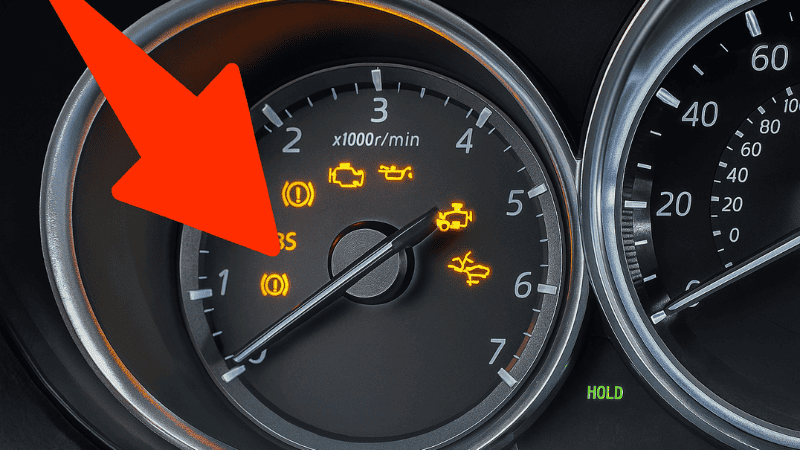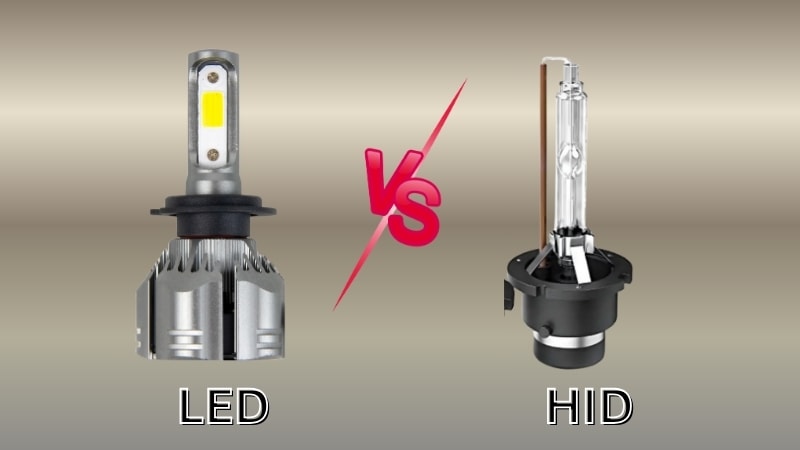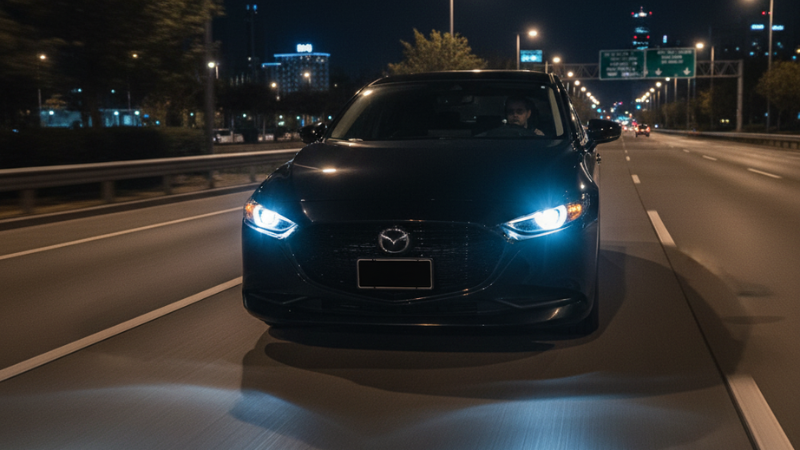So, what does ABS light mean on a car? If your ABS light flickers on, it indicates that there is something wrong with your Anti-lock Braking System—a safety feature that avoids lockup of the wheels under hard braking. It is usually caused by a low brake fluid reservoir, a faulty sensor, or a blown fuse. In this guide, we discuss the common causes and give you step-by-step procedures on how to repair them.
What Does the ABS Light Mean on a Car?
Your dashboard ABS warning lights show that there’s something wrong with the ABS, which stops your wheels from locking up by a hydraulic modulation during sudden or hard braking. When the ABS light comes on, the ABS is automatically disabled or not working. It is one of the important components of car braking.
This means that your regular braking system still works, but the extra protection of anti-lock vehicle control will not be available, which may compromise your ability to stop safely in case of an emergency.
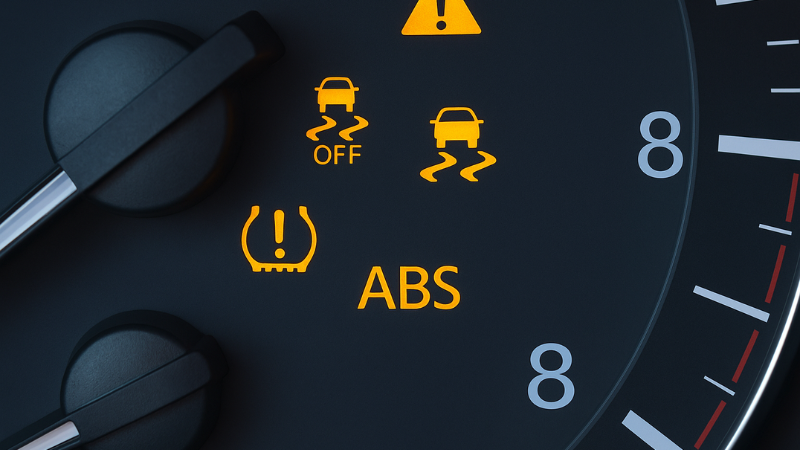
To understand all these problems, you must know how to decode the headlight symbols, and then you will be able to learn what’s happening with your car.
Is It Safe to Drive With the ABS Light On?
Driving with the ABS warning lights on for a short distance is normally safe since your regular brakes are functional. However, without the Anti-lock Braking System, you can face higher stopping distances and higher wheel lockup probabilities, particularly during hard braking or on slippery surfaces, to maintain optimal traction.
Keep speed low and soft-stopping. If your brake light is also illuminated or you’re driving in the rain, snow, or on ice, it’s safest to pull over and have your vehicle serviced right away or self-check the engine light. There are DOT, ECE, and SAE laws against this.
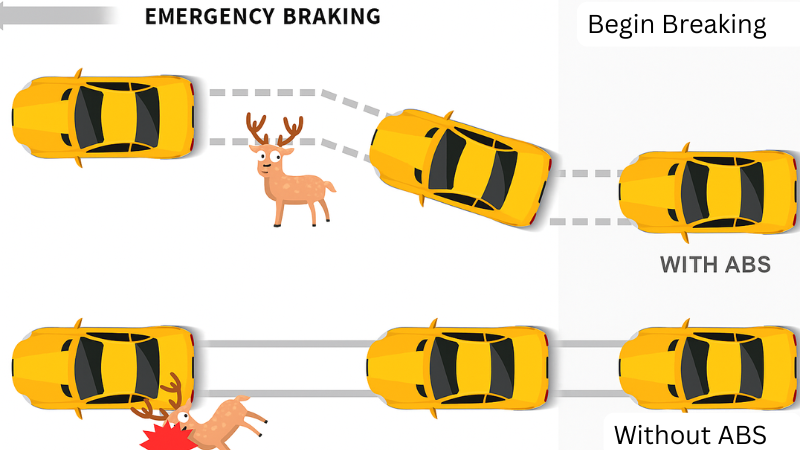
Typical Reasons Behind Light ABS On
There are many problems that can cause the ABS warning light to come on, most of which pertain to the system components that handle wheel speed sensor monitoring and control braking.
Faulty Wheel Speed Sensor: Speed Sensors track the speed of every wheel and report back to the ABS control module. If it fails, the system will not function properly, and it will trigger the ABS lights.
Blown ABS Fuse or Relay: Like any other electronics on your vehicle, the ABS utilises fuses and relays. If either of them fails or blows, the system may lose power, which could cause the ABS light.
Wiring Fault or Rusty Connectors: Rusty or damaged/rusty connectors and frayed/damaged wires will short out signals between the control module and ABS sensors, causing system failure.
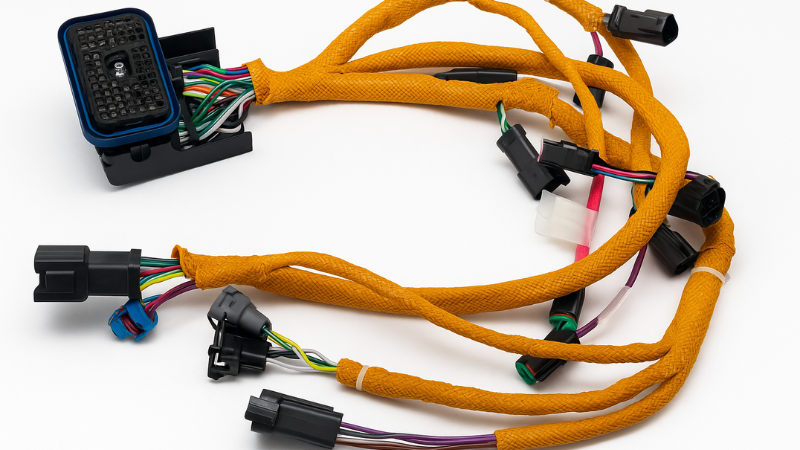
Low Brake Fluid or Dirty Sensor: In the event of brake fluid levels dropping too low, the ABS system will be shut down. A dirty fluid or a dirty sensor full of debris and dirt will get in the way of proper readings.
ABS Light and Brake Light Coming On Simultaneously
When both the brake warning light and ABS warning light illuminate simultaneously, it is a sign that something is wrong with the brake system to a much more critical level than when either of these two lights alone. It will affect the car’s faster response during an emergency.
It means that not only is the anti-lock braking system in trouble, but also your main braking system may be ruined. But if brake lights are not working, then there might be some other issue.
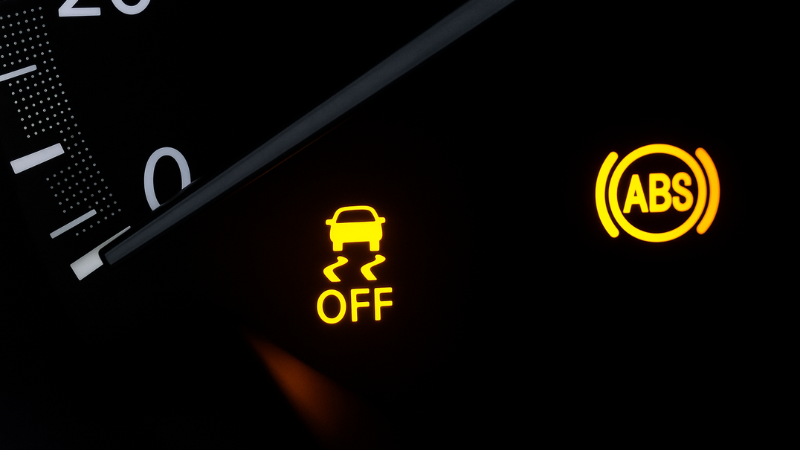
Possible Causes
Low Brake Fluid Level: Low brake fluid can be pumped into both the ABS and the regular brake system, which will light up both lights.
Master Cylinder Problem: Master cylinders produce the brake pressure or hydraulic pressure. Both lights will come on when the master cylinder is bad or leaking.
ABS Module Failure: Complete failure of the ABS control module can impact the entire braking system, particularly in those models with the ABS built into standard braking functions.
If you find both lights on, pull over and stop driving. Your braking power can be compromised or even faulty. You must pull over safely and have your car checked immediately by contacting the roadside assistance, or tow it to the authorised mechanic to check.
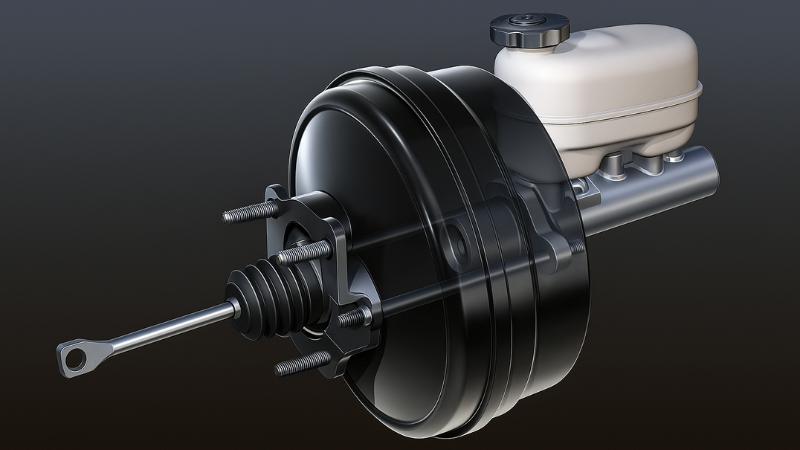
How to Reset the ABS Light Without a Scanner
You can attempt to reset the ABS light yourself manually without using a car scanner by using a series of easy-to-follow procedures. Begin with checking the level of the brake fluid and adding some if it’s low—this is usually the single most typical cause for ABS light illumination.
Second, examine the wheel speed sensors located close to each brake; clean any dirt or grime that could be contributing to faulty readings.
Lastly, attempt to rotate the ignition key ON and OFF three to five times to reset the system. The other solution is to discharge the car battery for 10 to 15 minutes, which can also reset the Electronic Control Unit (ECU) of the vehicle and clear the warning light. The best thing is to upgrade it with adaptive lighting systems.
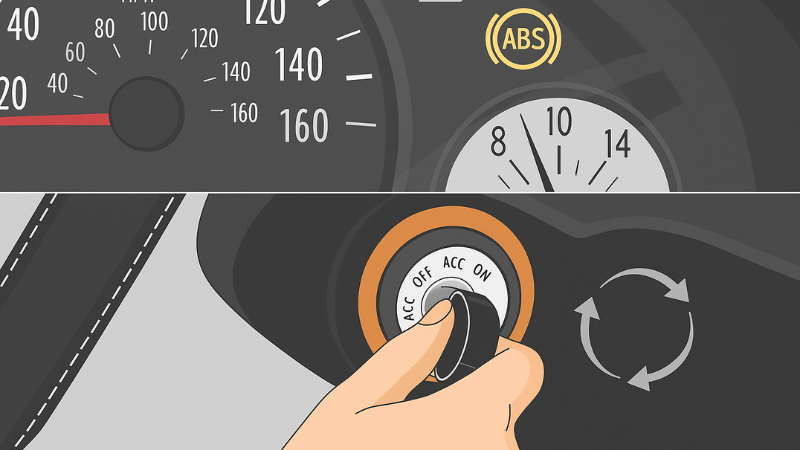
Will a Faulty Wheel Speed Sensor Engage the ABS Light?
Yes, yet another of the most common reasons that cause the ABS light to come on is due to a faulty wheel speed sensor. The job of the wheel speed sensors is to check the rate at which each wheel is turning and report it to the ABS control module.
Whenever any of the sensors provides a faulty or inconsistent signal, it will result in malfunctioning of the system, i.e., the ABS system goes out of operation completely or partially. The ABS light on your dashboard appears in such a case.
Why Your ABS Light Stays On While Starting the Car
Yes, and perhaps the most typical cause of the ABS light to come on is a faulty wheel speed sensor. Wheel speed sensors measure the revolutions per minute on all of the wheels and transmit that information to the ABS control module.
When this occurs, the ABS light on your dashboard will come on. The solution is generally easy—replacing the faulty sensor generally corrects the issue and puts the ABS in normal functioning mode again.
Effects of Disregarding the ABS Light
Disregarding the ABS light could lead to serious safety concerns and costly repairs. Without a functional Anti-lock Braking System, your brakes lock during hard braking, increasing the threat of skidding and loss of control, especially on wet or slippery roads.
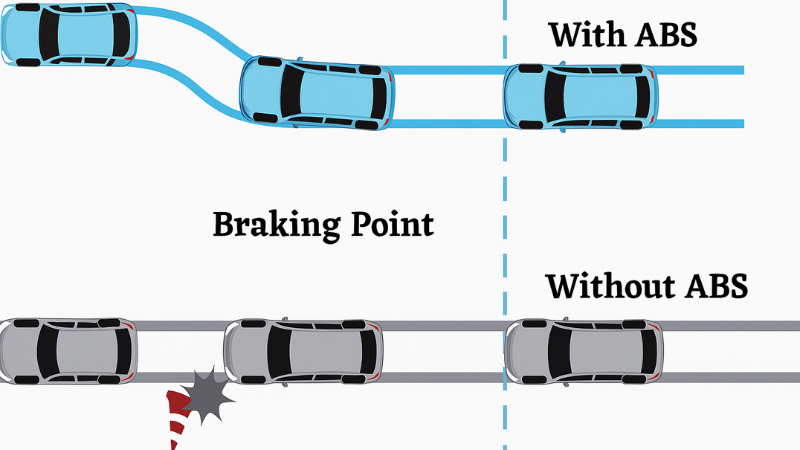
This increases the chances of accidents by a significant margin. Secondly, driving with an undiagnosed ABS problem can generate extra stress on other components of the braking system, which leads to further damage and higher costs for repairs. Repair these with better, efficient, and smarter lighting options.
Role of Anti-Lock Brakes
Anti-lock brakes play a crucial role as a safety feature that assists the driver in preventing loss of control during emergency stops.
By avoiding wheel lockup off-road, ABS minimises the risk of skidding and enables the driver to steer the vehicle while braking, particularly necessary on slippery, icy, or uneven surfaces.
Not only does the system improve overall vehicle stability, but it also dramatically reduces the potential for accidents during sudden stops. In short, ABS is necessary to drive safely, particularly under adverse road surface conditions.
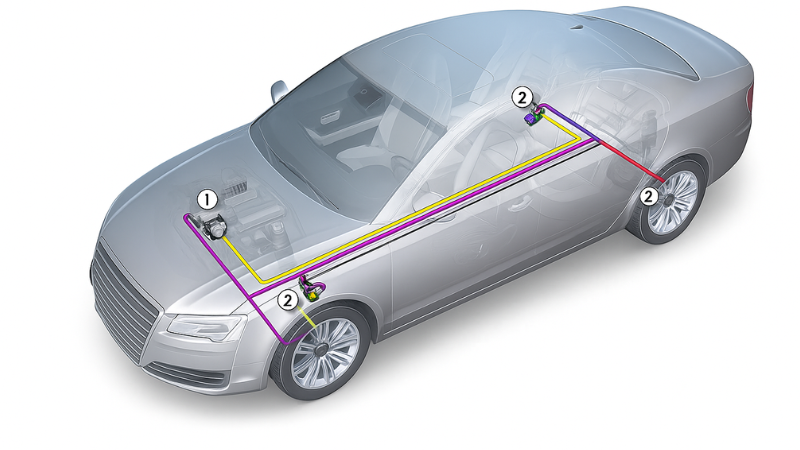
ABS Warning Light Flashing vs. Solid: What’s the Difference?
Though not the norm, a flashing ABS light typically indicates that there is an intermittent issue, i.e., a short-term sensor or electrical malfunction. It may come on and go away, but it is nonetheless showing that the system is not functioning perfectly.
However, a firm ABS light in most vehicles indicates there is a persistent issue—a very likely defective part, either a wheel speed sensor or wiring issue, that usually shuts down the ABS completely.
In such cases, either flashing or constant, both need a diagnostic test or a mechanic to fully diagnose and fix the problem.
In this situation, if you have hazard lights, you will be on the safer side because in this way, the oncoming traffic will also know you might have been experiencing some kind of issue.
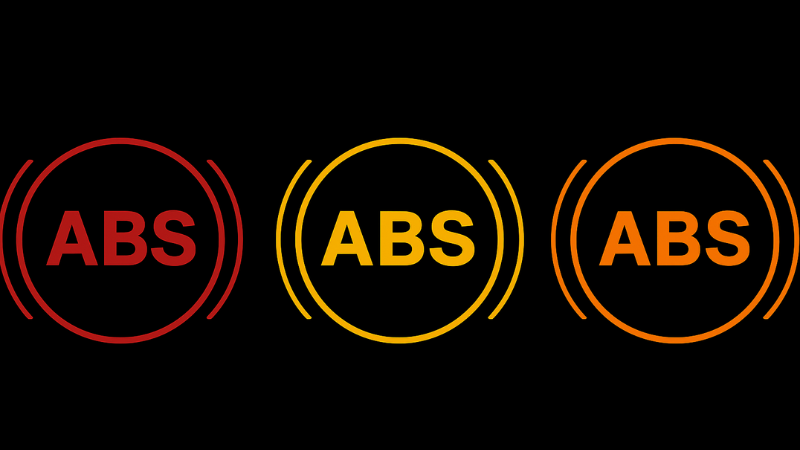
Cost to Repair ABS Light on a Vehicle
Repairing an ABS light can range from $100 to more than $1,000, depending on why. Simple problems, like low brake fluid or cleaning a wheel sensor, will be less than $100, while replacing a bad wheel speed sensor can be $150 to $400.
If some serious problem, such as a hydraulic pump and ABS control module, must be replaced with adaptive high-beam assistance, the job can be very costly, usually $500 to $1,200 or more. Getting a diagnostic scan from a mechanic (typically $80–$120) is the best method to see exactly what’s wrong and how much it will cost.
FAQs
Can I drive when the ABS light comes on?
Yes, for a short distance, even if only the ABS light illuminates, and brakes otherwise feel normal. Do not drive in rain, snow, or when brake light also illuminates.
Will the ABS light turn off by itself?
It should, if the issue is minor and self-corrects. Otherwise, it must be manually reset when the problem has been addressed.
What is the most common reason for the ABS light?
The most common reason is a faulty wheel speed sensor. Replacing the sensor will usually fix the problem.
Conclusion
The ABS light means there may be an issue with your anti-lock braking system. While short trips may pass, do not ignore the light since it can increase the risk of skidding or losing traction.
Most of the usual culprits, such as low brake fluid or a faulty wheel sensor, are typically easy to fix. To stay safe, fix the problem soon and get your system checked.
Strengthen Your Fleet Safety—Partner with CarLightVision Today
CarLightVision offers scalable, high-quality solutions to address changing new mobility requirements with a new inventory of 360 LED, CANbus lamps, High lumen, and 1:1 plug and play. Reach Out Now to Discover Strategic Partnerships and Grow Your Safety Technology Portfolio with Confidence
